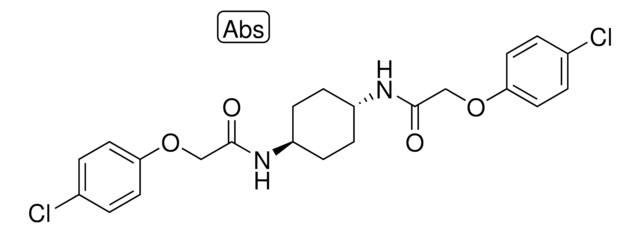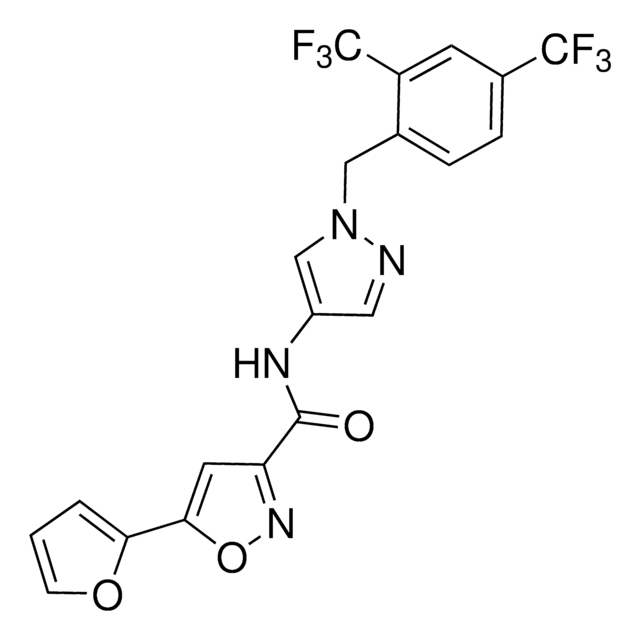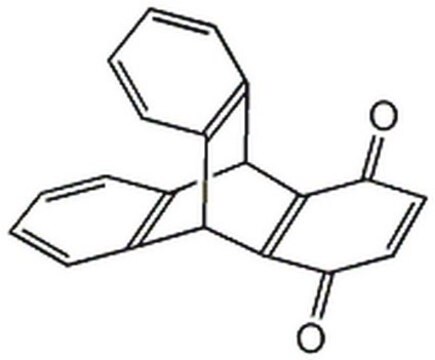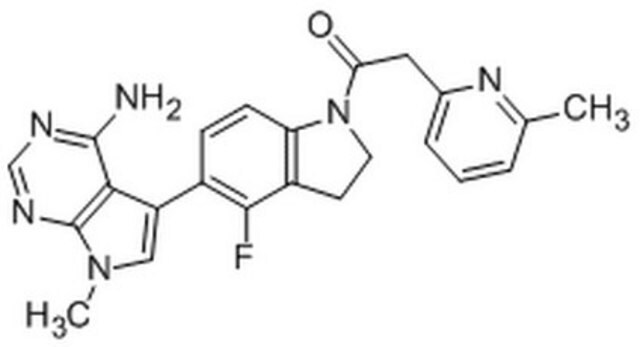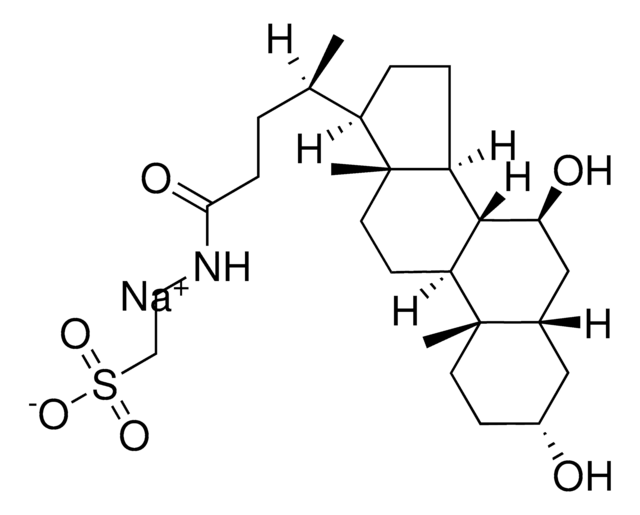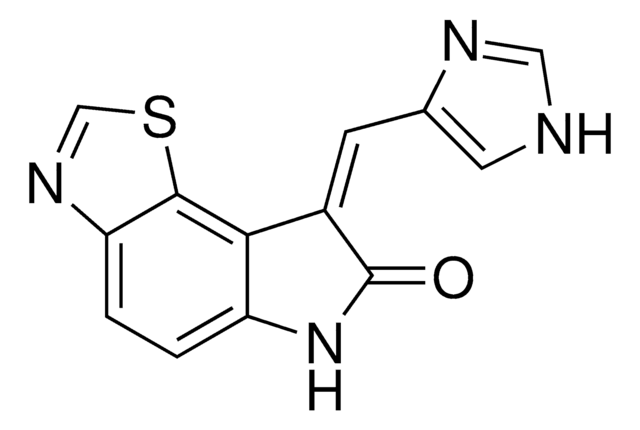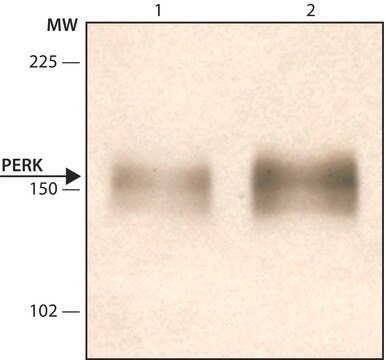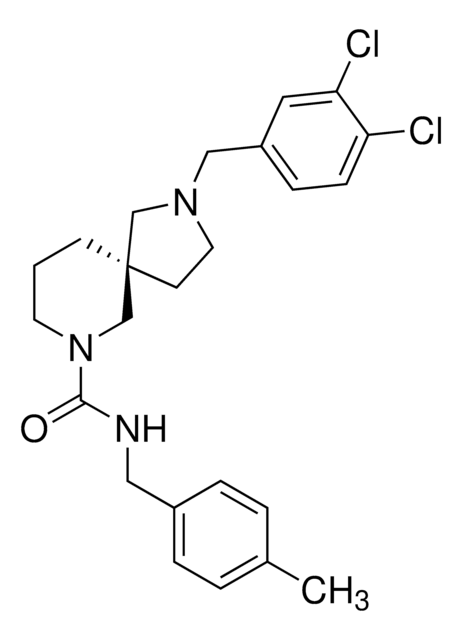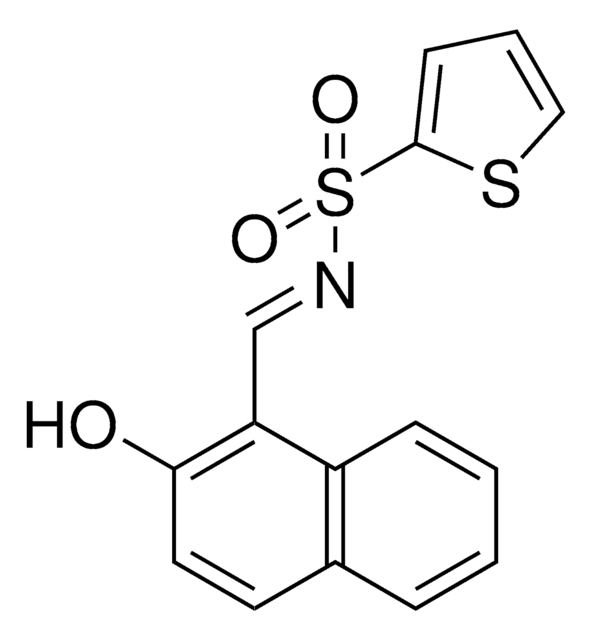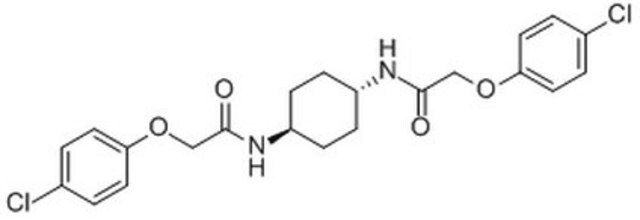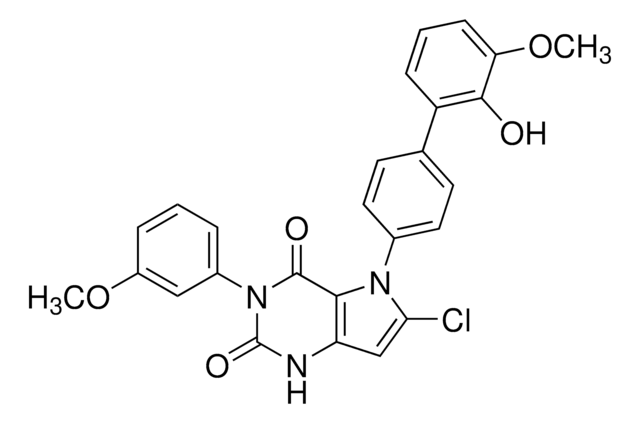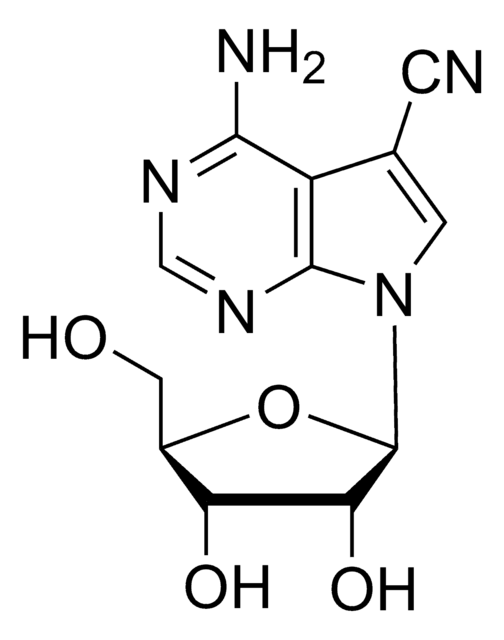516535
PERK Inhibitor I, GSK2606414
GSK2606414 is a cell-permeable, highly potent inhibitor of EIF2AK3/PERK (IC₅₀ = 0.4 nM; [ATP] = 5 µM). Targets PERK in its inactive DFG conformation at the ATP-binding region.
Synonym(s):
PERK Inhibitor I, GSK2606414
About This Item
Recommended Products
Quality Level
Assay
≥99% (HPLC)
form
powder
manufacturer/tradename
Calbiochem®
storage condition
OK to freeze
protect from light
color
white
solubility
DMSO: 100 mg/mL
shipped in
ambient
storage temp.
−20°C
SMILES string
O=C(CC1=CC=CC(C(F)(F)F)=C1)N2CCC3=C2C=CC(C4=CN(C)C5=C4C(N)=NC=N5)=C3
InChI
1S/C24H19F4N5O/c1-32-11-18(21-22(29)30-12-31-23(21)32)14-2-3-19-15(9-14)4-5-33(19)20(34)8-13-6-16(24(26,27)28)10-17(25)7-13/h2-3,6-7,9-12H,4-5,8H2,1H3,(H2,29,30,31)
InChI key
PXVQGBJMIQCDEX-UHFFFAOYSA-N
Looking for similar products? Visit Product Comparison Guide
General description
Biochem/physiol Actions
Perk
Packaging
Warning
Reconstitution
Legal Information
Storage Class Code
11 - Combustible Solids
WGK
WGK 3
Flash Point(F)
Not applicable
Flash Point(C)
Not applicable
Certificates of Analysis (COA)
Search for Certificates of Analysis (COA) by entering the products Lot/Batch Number. Lot and Batch Numbers can be found on a product’s label following the words ‘Lot’ or ‘Batch’.
Already Own This Product?
Find documentation for the products that you have recently purchased in the Document Library.
Customers Also Viewed
Our team of scientists has experience in all areas of research including Life Science, Material Science, Chemical Synthesis, Chromatography, Analytical and many others.
Contact Technical Service